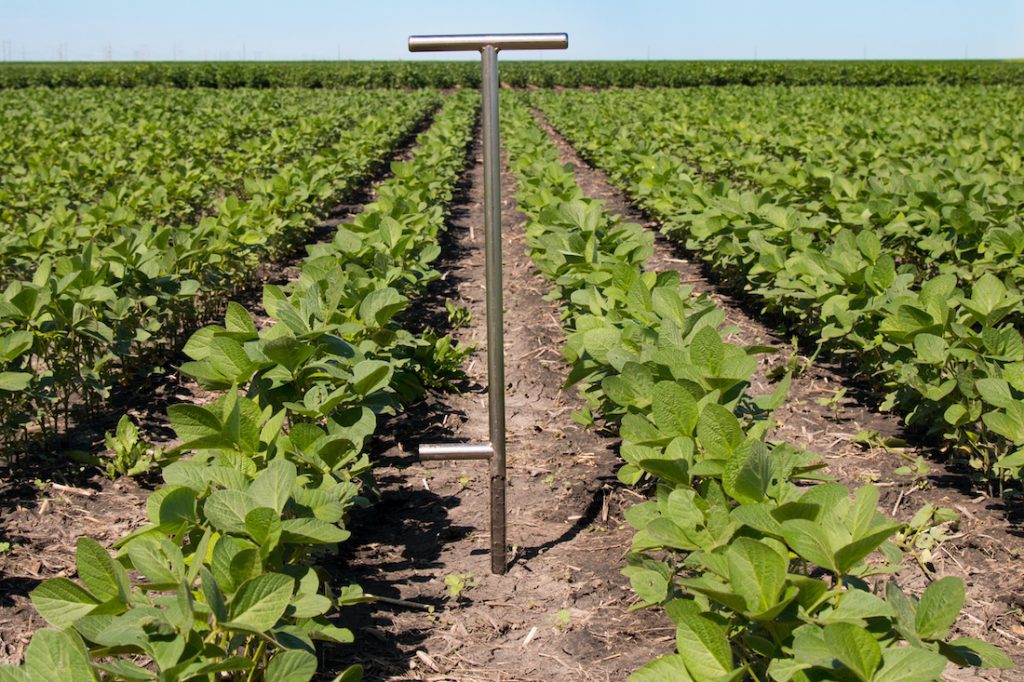We’re excited to announce the release of a peer-reviewed publication on enhanced rock weathering (ERW) in the journal Global Change Biology, confirming the latest in scientific progress from Eion’s verification method for quantifying CDR (carbon dioxide removal).
The paper, which was co-authored by Eion scientists, researchers from the University of Illinois at Urbana-Champaign (UIUC), and the Leverhulme Center for Climate Change Mitigation, found that silicate rock amendments significantly increased the amount of carbon captured in two different common crop systems. Representing one of the longest running trials on enhanced rock weathering, this work demonstrates the potential of ERW to be a powerful climate change mitigation strategy.
This is a significant finding for Eion, as it validates our approach to measuring and verifying CDR. In our patented methodology, we use soil samples that farmers regularly take to analyze specific trace elements and micronutrients that are present in the rock. We take samples before and after the rock application, and the difference in trace elements and micronutrients lets us quantify the weathering products that dissolved and stored carbon dioxide.
Working together toward rigorous MRV for enhanced rock weathering
Building trust in Eion’s measurement, reporting, and verification (MRV) methodology is crucial to scaling ERW. It’s up to us as responsible CDR practitioners to deliver science-backed, auditable evidence of CDR through a rigorous MRV framework, and we believe in sharing what we learn for the benefit of all. Our co-founder and CTO Elliot Chang created the International Science-In-Industry ERW Working Group to further foster scientific collaboration, and Eion scientists also regularly present at international conferences, share white papers, and publish peer-reviewed research in respected journals.
Collaborating with trusted research institutions
By partnering with academic experts, we aim to uphold the highest standards of research, ensuring our findings are robust and trustworthy. On this research, we chose to work with two well-regarded institutions: the University of Illinois Urbana-Champaign and the Leverhulme Center for Climate Change Mitigation. Collaborating with academic researchers at these esteemed organizations provided our team with a wealth of support, from advice on field sampling methods to valuable technical feedback on our work.
The Energy Farm at UIUC, a huge living laboratory dedicated to finding sustainable approaches to agricultural and energy production, provided the ideal site for our research. It’s home to some of the longest-running enhanced weathering trials around the world, ongoing since 2016. The site also has other specialized equipment that enables holistic study, including weather stations, eddy flux towers that measure CO2 fluxes, and tile drains to look at leachate.
What the research found
This paper addresses the impact of four years of applying the silicate rock basalt to maize/soybean rotation and miscanthus (a grass used as an energy crop) in the midwestern US, representing one of the longest running trials on ERW. Eion’s role was to use our direct measurement methods to quantify the carbon dioxide removed over the four years in each of the cropping systems.
We found evidence that basalt amendments significantly increase the amount of carbon captured in both maize/soybean rotation and miscanthus systems. Beyond carbon capture, our findings spotlighted increased yields, particularly in miscanthus—a crucial benefit to our farmer partners. These results show that ERW represents an opportunity for integrating climate change solutions in agricultural ecosystems.

While the research was performed with basalt, the benefits hold true for CarbonLock, Eion’s olivine material, which is another form of silicate rock. We work with olivine because of the ease of application for farmers, high carbon removal potential, and ready availability.
The reward of a productive industry-academic relationship
This paper is an important step for Eion, as it represents the first peer-reviewed, accepted direct measurement-based method for quantifying ERW CDR under multi-year, field scale conditions. Constructive engagement with journal reviewers and subsequent acceptance of the work for publication led to an improved manuscript, ultimately demonstrating the productivity unlocked by a well-functioning industry-academic relationship. This publication is the outcome of Eion’s deep desire to unlock measurable CDR impact for the broader ERW community in both academia and industry. Beyond generating insights, our approach to this collaborative research serves as a blueprint for bridging the gap between cutting-edge science and real-world implementation.
